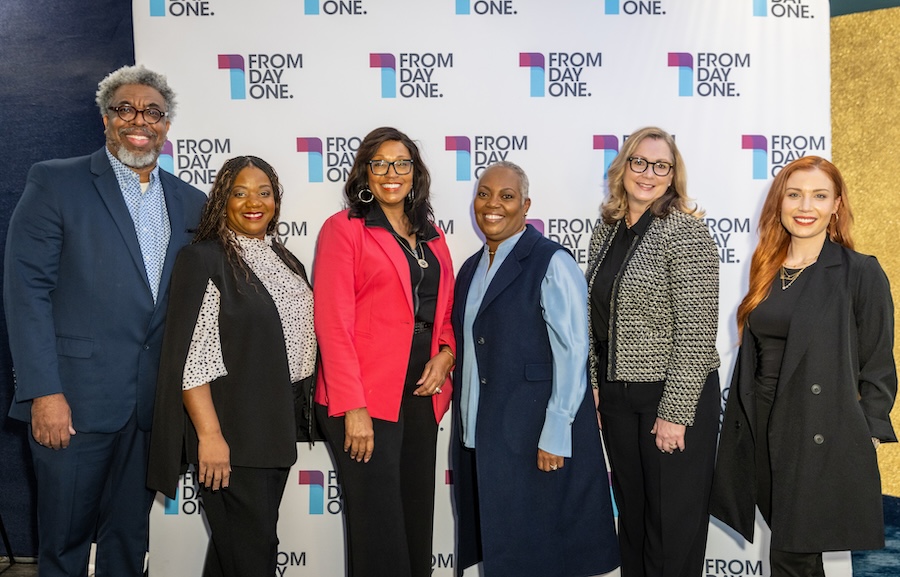Boosting Productivity in a Changing Workplace–and Workforce
A number of stressors are hindering the productivity of today’s workforce. Some employees still need help with the adjustment to working remotely or in a hybrid environment, says Millette Granville, VP of diversity, equity and inclusion at 2U.“People get a little antsy if they’re remote but three people on their team are in person,” she told moderator Krissah Thompson, managing editor of the Washington Post in a panel discussion at From Day One’s conference in Washington, D.C.“They’re thinking, ‘Do I have career growth? Can I move through the organization If I’m remote?’” More than ever, employees long for a sense of belonging, says Granville. “Research shows that employees that feel like they belong are going to stay longer, they're going to be more innovative,” she said.A recent survey at the cloud-based human capital technology and services provider Alight revealed that one in five of its employees had a behavioral health problem, while 75% were experiencing some degree of stress and anxiety. “We’re probably underestimating it, to be honest,” said Dr. Bipan Mistry, chief medical officer at Alight.Improving Mental Wellness in the WorkplaceTammy Kness, SVP of human capital management and communications at General Dynamics Information Technology (GDIT), shared that the company kicked off a mental health awareness initiative called “How Are You Really?” several years ago.GDIT has a website with resources on how to have conversations with employees and colleagues about stress and anxiety. “It’s been really encouraging to see how just offering to talk about that in the workplace is increasing productivity and connectedness and community,” Kness said. “We’re just trying to destigmatize talking about mental health and sharing with our employees. It’s OK not to be OK, but it’s not OK to not ask for help.”The panelists spoke on the topic "Boosting Productivity in a Changing Workplace–and Workforce" at From Day One's D.C. conference A lack of access to healthcare providers, particularly in the mental health field, is an issue that prevents many people from seeing the help they need, says Mistry. “That’s where having some navigation services for behavioral health is really key,” he said. “And it’s not just the employee. We also have to think about the family unit.”Alight data shows that 20% of behavioral health guidance is for pediatric adolescent conditions. “So, let’s not forget about the element of the parental unit and how that affects productivity at work,” he said. Employees also need some flexibility in the workday so they can go to appointments when they find a provider.Remote and Hybrid WorkFlexibility is also the key to remote and hybrid work, says Kness. “One size doesn't fit all,” she said. Nearly half of all GDIT employees are on-site in a secured facility because of the nature of their work. That didn’t change, even during the pandemic. However, some employees were working remotely for years before Covid.She said the key is to have an approach that balances all these ways of working while keeping everyone connected. For example, GDIT’s employee resource groups now meet remotely to discuss topics such as mental health and inclusivity.“It has to be a very multifaceted strategy around investing in your managers, engaging your employees, being really intentional about your strategy, and building those communities,” Kness said.According to Granville, employers should also be aware of proximity bias which could lead to unequal treatment between in-person team members and remote ones.“If you’re the leader, you need to make sure you’re doing all the things you need to do to engage everyone in a way that’s impactful and meaningful to them,” she said.How to Keep Employees EngagedLiz Janssen, VP of talent experience and transformation at ICF says the company has been on a performance management journey over the past three years. “We heard our employees through surveys and focus groups say they want to connect what they do to the company mission, and that they want more frequent feedback,” she said. “They also wanted to focus on their career growth. That was the number one reason why people were leaving.”ICF responded by doing quarterly check-ins with employees rather than an annual review. If an employee or manager wants to have conversations even more frequently than that, they can make that request. In addition, managers have started talking to employees about how their work contributed to the firm’s overall success.“We test the effectiveness and our employees are saying it’s really helped a lot,” Janssen said. “We didn’t make it mandatory, but we’ve seen a growth and adoption rate of 50% year over year.”Michal Alter, founder and CEO of Visit.org, which helps corporations engage their employees, said one client came to them several years ago because morale was extremely low at the company following a merger.“We worked on putting together a larger global day of service,” she said. “That’s what we do, we work with nonprofits all over the world. And we create content for volunteering and different types of team-building learning opportunities.”That initial day of service had an outstanding 25% participation rate, says Alter. “That became the moment in time where everyone felt that they were coming together,” she said. “And from that point on, they saw the new beginning of the merged company.”The global day of service has not only become an annual tradition for the client. “Employees are now asking me to do it throughout the year,” Alter said. “That focus on the mission really brought everyone together to create a productive work environment.”Mary Pieper is a freelance writer based in Mason City, Iowa.





